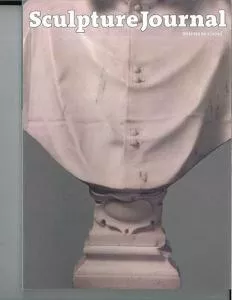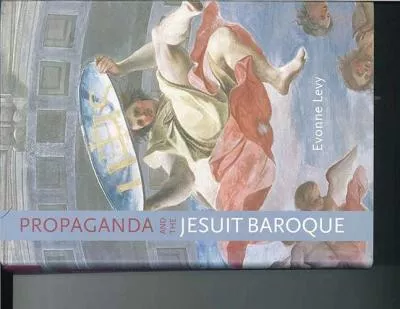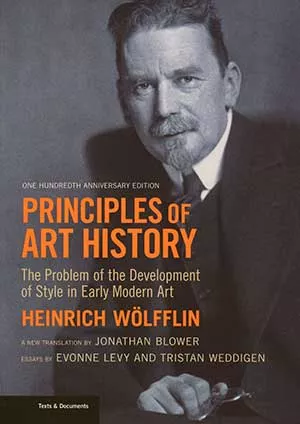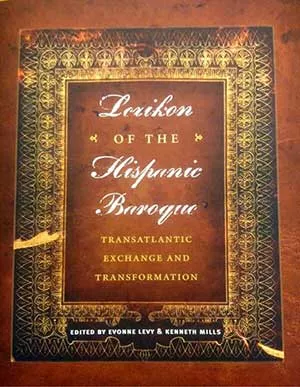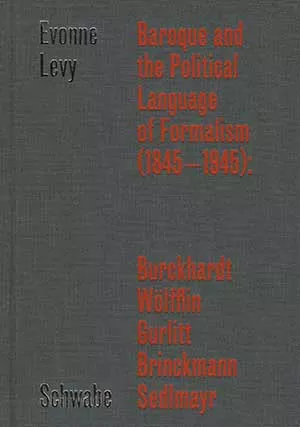
Evonne Levy
-
E-mail:
-
Phone:
-
Room:CCT 3063
-
Office Hours:Mondays 1:30-3:00pm, or online via Zoom, by appointment.
Professor of Early Modern Art and Architecture
Undergraduate Appointment: Department of Visual Studies (UTM)
Graduate Appointment: Department of Art (St. George)
Education
1993 - Ph.D. Art History, Princeton University
1987 - M.F.A. Art History, Princeton University
1984 - M.A. Art History, Brown University
1983 - B.A. Art History & Studio Art, Brown University (magna cum laude)
Biography
I work on early modern art and architecture and the history of art history, especially at the intersection of politics.
My training was in the art and architecture of the Italian baroque and my first book Propaganda and the Jesuit Baroque arose from several years of archival research in Rome and some hard thinking after a post-doctoral fellowship in Berlin about what it means when an art historian calls a work of art “propaganda.” This question, which is essentially about our motives as historians, piqued my interest specifically in the politics of the discipline of art history. For the past two decades I have worked on the ways in which politics have shaped art history, specifically the concept of the Baroque in the German-speaking world. My second book, Baroque and the Political Language of Formalism (1845-1945): Burckhardt, Wölfflin, Gurlitt, Brinckmann, Sedlmayr showed how over art history’s first century, a fundamental term of art history was shaped by the political views of individuals as shaped by the politics of their time. I have also intensively investigated a single foundational art historical text, Heinrich Wölfflin’s Principles of Art History (1915). For the centenary of the book’s publication in 2015 I co-edited with Tristan Weddigen the first critical edition and new English translation of the book and co-edited a study The Global Reception of Heinrich Wölfflin’s Principles of Art History that argued that the book was so central to the discipline that one can virtually survey the history of art history from the history of translation, interpretation and reading of Wölfflin’s book. My research on historiography has involved travel to libraries and archives in Germany, Austria and Switzerland and I have taught in this area as Guest Professor at the Johann Wolfgang Goethe Universität in Frankfurt and at the Ecole des Hautes Etudes en Sciences Sociales in Paris.
My initial training was in Italian art but since then I have worked on the Baroque throughout Europe and now in Latin America. As a co-investigator in the SSHRC Major Collaborative Research Project “The Hispanic Baroque” I expanded my research and my teaching into Colonial Latin America. Out of this project has come The Lexikon of the Hispanic Baroque: Transatlantic Cultural Transformation, an interdisciplinary volume co-edited with historian Kenneth Mills.
Teaching and Research
Research fuels teaching and teaching stimulates research. My seminars are a good reflection of my conviction that the best seminars – for undergraduates and graduate students alike - are the ones in which there is a live and open research question that we formulate together. My interest in intermediality has found outlets in courses on Paper in Early Modernity and a new course on Technical Art History grows out of the Bernini’s Bronzes project. My publications on Bernini (Bernini’s Biographies: Critical Essays, a special issue of The Sculpture Journal on Bernini’s Portraits and Material Bernini) all arose from my seminars taught at the undergraduate level at UTM and at the graduate level at UTSG. Bernini’s Biographies started with a discussion in Toronto with Maarten Delbeke and Steven Ostrow and grew to a larger conference in Rome, then the book. The Bernini Portrait Seminar was occasioned by a major exhibition (at the National Gallery in Ottawa) which we visited together. We pursued the subject with Bernini specialists from all over the world at a conference in Toronto “Bernini Double-Take” (March 2009). And Material Bernini was a response to the exhibition Bernini: Sculpting in Clay at the Metropolitan Museum of Art in 2012. A group of adventurous students travelled to New York to see the exhibition and to hold a joint seminar with students from NYU and Rutgers University as well. Our group stayed four days longer in New York than expected as we waited out Hurricane Sandy. An international conference held in Toronto a month later brough the exhibition curators and other scholars to Toronto.
UTM Undergraduates have made very significant contributions to my research projects. Students in FAH 470 produced an hour-long documentary in which they interviewed the Art History faculty of the University of Toronto about their views of Wölfflin’s Principles of Art History. See the 19-minute version (and meet our faculty) here: https://www.youtube.com/watch?v=39MoKbmqzbQ&feature=emb_logo
Almost all of the data compiled for the History of Art History in Canada website was produced by undergraduates who held Research Assistant positions through the Work-Study program. This unique resource tells the story of the discipline of art history in Canada university by university. [https://arthistoryincanada.ca/]
Current Research Projects
My current projects take me back to objects. I am a leader with Lisa Ellis (AGO) and Jane Bassett (Getty) of a SSHRC-funded collaborative project –The Technical Study of Bernini’s Bronzes: Art History, Conservation and Material Science – to conduct technical studies (material analyses, study of casting techniques) for the first time of all of Bernini’s works in bronze. I am also working on a book to be entitled The Intermedial Condition of Early Modern Art. In this study I write a history of early modern art from the perspective of emergent media and intermediality, informed by media studies perspectives on media genealogies.
Links
UTSG Webpage: https://arthistory.utoronto.ca/people/directories/all-faculty/evonne-levy
On Academia.edu: https://utoronto.academia.edu/EvonneLevy
Canada. A History of Art History research project with data: https://arthistoryincanada.ca/
The Wölfflin Project: https://thewolfflinproject.utoronto.ca/
Courses Taught
Current Undergraduate Courses
FAH 105H Introduction to the History of Art and Architecture
FAH 274 Renaissance Art and Architecture
FAH 279H Baroque Art and Architecture
FAH 332H Topics in Baroque Painting
FAH 353H Rome in the Age of Bernini
FAH 356H Colonial Latin American Art and Architecture (Spring 2015, Fall 2016, Fall 2019)
FAH 470 The History of Art Histor
FAH 493H The Renaissance Paper Media Revolution (Winter 2020)
FAH 493H Topics in Early Modern Art: The Mobile Early Modern Object (Winter 2017)
FAH 493H Topics in Baroque Art: Bernini and the Clay Sketch (Fall 2012)
Recent Graduate Courses
FAH 1205H Early Modern Intermediality
FAH 1288H Gianlorenzo Bernini
FAH 1298 Heinrich Wölfflin’s Principles of Art History @100: A Worldwide Reception History
Publications
Books
Baroque and the Language of Political Formalism (1845-1945): Burckhardt, Wölfflin, Gurlitt, Brinckmann, Sedlmayr. Basel: Schwabe Verlag, December 2015.
The Global Reception of Heinrich Wölfflin’s Principles of Art History (1915-2015). Co-edited with Tristan
Weddigen. Studies in the History of Art Volume 82, Center for Advanced Study in the Visual Arts, National Gallery of Art, Washington, D.C., 2020.
Material Bernini. Co-edited with Carolina Mangone. Routledge/Ashgate Press. 2016.
Heinrich Wölfflin, Principles of Art History: The Problem of Development of Style in Early Modern Art. Co-edited with Tristan Weddigen, translated by Jonathan Blower. Los Angeles: Getty Institute Publications, 2015.
Lexikon of the Hispanic Baroque: Transatlantic Cultural Transformation. Co-edited with Kenneth Mills. Austin: University of Texas Press, December 2014.
Propaganda and the Jesuit Baroque. Berkeley: University of California Press (2004). 2nd printing June 2005.
Bernini and his Biographies: Critical Essays, co-edited with Steven F. Ostrow and Maarten Delbeke. University Park, Pa.: Penn State University Press, 2006.
The Sculpture Journal. Special Issue on Bernini’s Portraits, co-edited with Catherine Hess. No. 2 (2011).
Selected Articles and Book Chapters
“The Classical in Baroque Art: History of a Disrupted Dialectic,” in Caravaggio & Bernini: Early
Baroque in Rome, ed. Fritz Scholtern, Gudrun Swoboda, Stefan Weppelman, exh. Cat. Kunsthistorisches Museum (Vienna), Rijksmuseum (Amsterdam), (Hannibal, 2019), 88-93.
“Eyewitnessed Historia and the Renaissance Media Revolution: Visual Histories of The Council of Trent,”
Representations Vol. 145 No. 1 (Winter 2019): 55-79.
“The Honor of the Altar, the Fate of Cults: Jesuit Saints in Roman Churches (1670–1713),” in The Holy Name: The Art of the Gesu: Bernini and his age, edited by Linda Wolk-Simon (Philadelphia: St. Joseph’s Press, 2018), 145-182.
“’Mass’ Produced Devotional Paintings in the Andes: Mobility, Flexibility, Visual Habitus,” in The Nomadic
Object: The Challenge of World for Early Modern Religious Art, ed. Christine Göttler and Mia M. Mochizuki (Leiden: Brill, 2017): 271-290.
“The German Art Historians in the Great War: Kulturpropanda and the Stillbirth of Propaganda Analysis,” in Apologeten der Vernichtung oder “Kunstschuetzer? Kunsthistoriker der Mittelmächte im Ersten Weltkrieg Ed. Beate Störkuhl and Robert Born (Vienna: Böhlau, 2017), 43-60.
“Wittkower’s Old Oak Branches: Thirty Years of Bernini Studies (1980s–today)” in Bernini, ed. Andrea Bacchi e Anna Colliva (Milan: Officina, 2017), 357-367.
“Jesuit Architecture worldwide: A Culture of Corporate Invention,” in The Companion to Early Modern Architecture, ed. Alina Payne (Blackwell Press. 2017).
“Early Formalism's Suppression of Content: Wölfflin on Hans von Marées and the modern homoerotic classical picture.” In Das Problem der Form, ed. Regine Prange and Hans Aurenhammer (Berlin, Deutsche Verlag, 2016), 71-85.
“Obstacles in the Path to a Material Bernini (1900–present),” in Material Bernini, ed. Evonne Levy and Carolina Mangone (New York: Routledge, 2016): 1-19.
“Wölfflin’s Principles of Art History (1915-2015): A Prolegomenon for its Second Century.” In Heinrich
Wölfflin, Principles of Art History: The Problem of Development of Style in Early Modern Art. Translated by Jonathan Blower. Edited by Evonne Levy and Tristan Weddigen. Los Angeles: Getty Research Institute, 2015, 1-46.
“Riegl and Wölfflin in Dialogue on the Baroque” in Baroque and the Architects. Edited by Andrew Leach, John Macarthur and Maarten Delbeke. Ashgate Press 2015, 87-96.
Co-author, with Kenneth Mills, “Introduction: Technologies of Transformation in the Hispanic Baroque World,” in Lexikon of the Hispanic Baroque, University of Texas Press, 2013, 1-8. (joint author)
“Art and Propaganda,” Oxford Bibliographies of Art. (online annotated bibliography, published 2017)
“Early Modern Jesuit Arts and Jesuit Visual Culture: A View from the Twenty-First Century,” Journal of Jesuit Studies 1 (2013): 66-87.
“Ernst Kris, The Legend of the Artist (1934) and Mein Kampf,” Oxford Art Journal 36, no. 2 (2013): 207-229.
“Gian Lorenzo Bernini,” Oxford Art Bibliographies (online annotated bibliography, published 2013)
“The Political Project of Wölfflin’s Early Formalism.” October 139 (2012).
“Repeat Performances: Bernini, the portrait and its copy,” Sculpture Journal 2 (2011) 239-49.
“Bernini Double-Take,” Sculpture Journal 2 (2011) 197-206.
"The German Art Historians of World War I: Grautoff, Wichert, Weisbach and Brinckmann and the activities of the Zentralstelle für Auslandsdienst,“ Zeitschrift für Kunstgeschichte 3 (2011) 373-400.
“Sedlmayr and Schapiro Correspond, 1930-1935,” Wiener Jahrbuch für Kunstgeschichte LIX (2010; appeared 2011)
